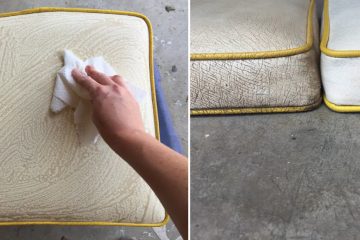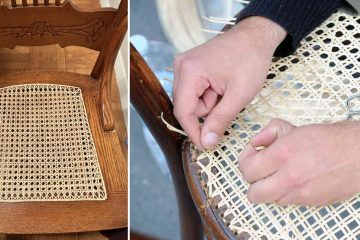Leather chairs exude elegance and sophistication, but over time, they can develop unsightly cracks. If you’re wondering how to fix cracked leather chairs, you’re in the right place. In this comprehensive guide, we will explore steps on how to fix cracked leather chair.
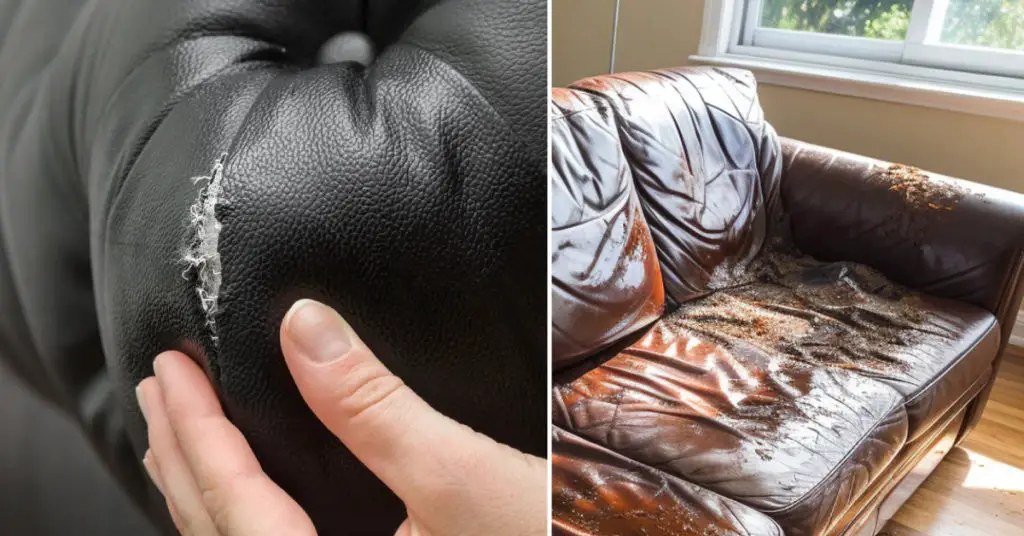
Understanding Cracked Leather Chairs
What Causes Cracked Leather?
Leather is a natural material that can deteriorate over time. It is important to understand the factors that contribute to cracked leather. Exposure to sunlight, heat, and dry conditions can cause the natural oils in leather to dry out, leading to cracks. Additionally, a lack of proper maintenance, such as regular cleaning and conditioning, can also accelerate the deterioration process.
Types of Leather Damage
When it comes to leather chairs, various types of damage can occur. Surface cracks, scratches, and scuffs are common and can often be repaired with the right techniques. However, deeper cracks, tears, burns, or holes that penetrate the material may require more extensive repairs, including patching and filling. It is crucial to assess the severity of the damage before proceeding with the appropriate repair methods.
7 Worry-Free Steps How to Fix Cracked Leather Chair
Follow these steps to how to fix cracked leather chair and restore its supple look and feel:
Supplies Needed:
- Leather cleaner
- Leather conditioner
- Fine grit sandpaper
- Leather filler/sealant
- Small spatula or putty knife
- Soft cloth
- Protective gloves
Step 1: Clean the Leather Surface
Use a soft cloth to remove any dirt or dust from the cracked area and surrounding upholstery. Then use a leather cleaner and gently wipe the surface to prep the leather.

Step 2: Apply Leather Conditioner
Rub a leather conditioner into the cracked area using small circular motions. Let it soak in for a few minutes to rehydrate the leather.
Step 3: Smooth Out the Cracks
Gently buff the edges of the cracks with fine-grit sandpaper to flatten them out. Take care not to rough up the surrounding leather.
Step 4: Fill in the Cracks
Using a small spatula or putty knife, work the leather filler paste into the cracks. Fill them flush to the surface and let dry completely.
Step 5: Sand the Filler Smooth
Once dry, lightly sand the area to smooth the filler for an even finish. Buff the sanded spot with a soft cloth.
Step 6: Seal and Protect
Apply a leather sealant balm over the repaired cracks. Rub it in to blend the area and condition the leather.
Step 7: Consider Color Touch-ups
If needed, use leather dye or paint in a matching color for any slightly mismatched spots. Test first.
You Can Check It Out to Remove Scratches From Leather Chair.
Preventive Measures for Leather Chairs
To minimize the occurrence of cracks and other damage, it is essential to take preventive measures for your leather chairs. Regular cleaning and conditioning play a vital role in maintaining the health and appearance of the leather. Using suitable leather conditioners and protecting the chairs from direct sunlight and heat can also significantly extend their lifespan.
A. Regular Cleaning and Conditioning
Cleaning your leather chairs regularly helps remove dirt, oils, and other contaminants contributing to cracking. Use a soft cloth or a brush specifically designed for leather to clean the surface gently. Conditioning the leather after cleaning helps replenish the natural oils and keep it supple and moisturized.
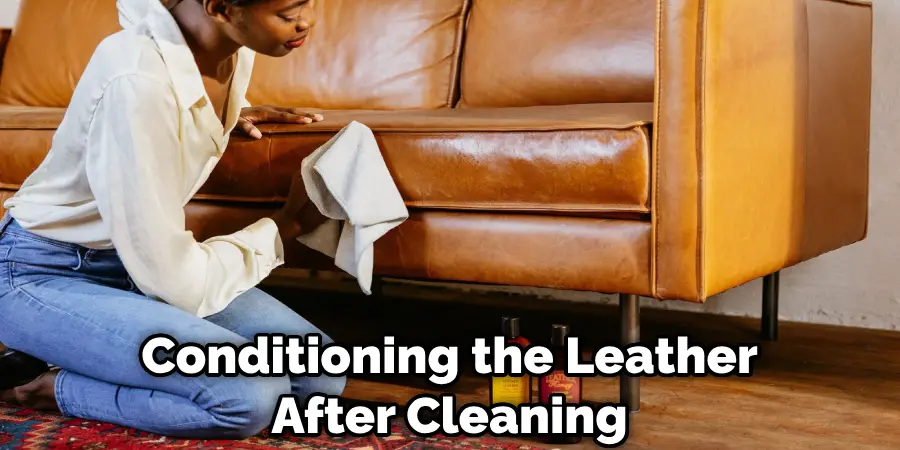
B. Protection from Sunlight and Heat
Excessive exposure to sunlight and heat can cause heat leather to dry out and become more prone to cracking. Avoid placing leather chairs in direct sunlight or near heat sources such as radiators or fireplaces. If necessary, use curtains or blinds to block out harmful UV rays and regulate the temperature in the room.
Repairing Light Cracks in Leather Chairs
Light surface cracks in leather chairs can often be easily repaired with the right approach. Here’s a step-by-step guide to fixing light cracks:
A. Cleaning the Leather Surface
Before repairing the cracks, it is crucial to clean the leather surface thoroughly. Use a mild soap or leather cleaner and a soft cloth or brush to remove dirt or debris. Gently scrub the affected areas to ensure a clean surface for the repair process.
B. Applying Leather Conditioner
Once the leather surface is clean and dry, apply a high-quality leather conditioner. Choose a conditioner specifically designed for your type of leather. Apply the conditioner to a soft cloth and gently rub it into the cracks and surrounding areas. The conditioner will help moisturize the leather and make the cracks less visible.
Dealing with Deep Cracks in Leather Chairs
If your leather chairs have deep cracks, a more comprehensive repair approach is necessary. Follow these steps to fix deep cracks effectively:
A. Cleaning and Preparing the Leather
Start by cleaning the leather surface with a mild soap or leather cleaner, as mentioned earlier. Use a soft cloth or brush to remove dirt or debris from the cracks. Make sure the surface is dry before proceeding to the next step.
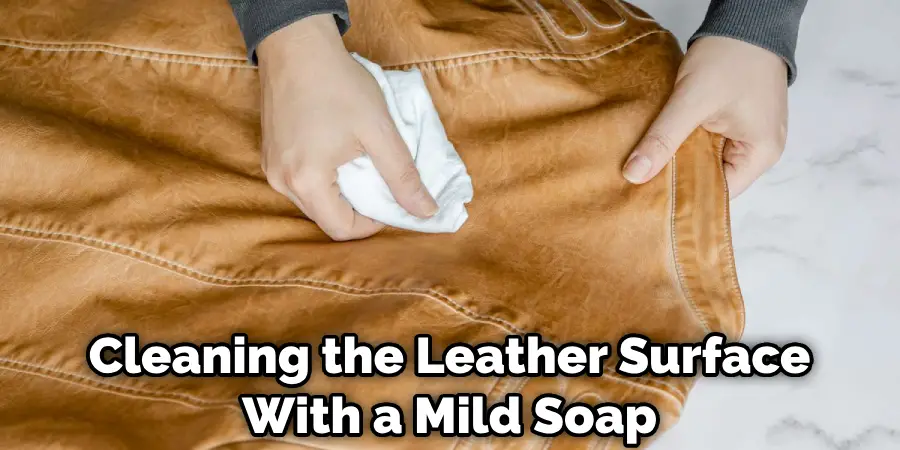
B. Using Leather Crack Filler
To repair deep cracks, you’ll need a leather crack filler. Choose a filler that matches the color of your leather chairs. Apply the filler to the cracks using a palette knife or a similar tool. Smooth out the filler and ensure it fills the cracks. Allow the filler to dry according to the manufacturer’s instructions.
C. Refinishing and color-matching
After the filler has dried, it’s time to refinish the repaired areas to blend them with the rest of the leather chairs. Use a leather dye or paint that matches the original color of the chairs. Apply the dye or paint in thin layers, allowing each layer to dry before applying the next. Make sure to follow the instructions provided with the product for the best results.
Repairing Cuts, Tears, and Holes in Leather Chairs
In addition cracks, cuts, tears, burns, or holes in leather chairs require specific repair techniques. Follow these steps to fix such damage effectively:
A. Subpatching the Damaged Area
Before filling the cuts, tears, or holes, it’s essential to sub-patch the damaged area. Cut a patch slightly larger than the damaged section from a piece of matching leather or use sub-patch material designed for leather repairs. Glue the patch to the underside of the upholstery to provide a stable foundation for the filler.
B. Applying Flexible Leather Filler
Apply a flexible leather filler to the damaged area using a palette knife or a similar tool. Work in thin coats, building up the filler until it is level with the surrounding leather. Take care when blending the filler with undamaged areas to avoid peeling. If needed, use alcohol to smooth any imperfections before applying a final texturizing coat.
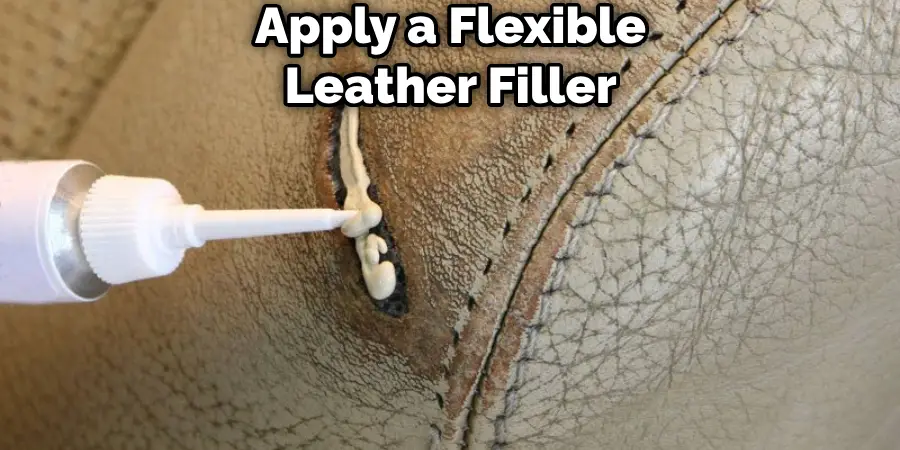
C. Final Touches and Refinishing
Once the filler has cured, it’s time to finish the repair by refinishing the treated area. Apply a water-based finish or a suitable leather dye to match the color of the chairs. Follow the product instructions for application and drying time. Ensure the repaired area blends seamlessly with the rest of the leather chairs.
Restoring Dry and Porous Leather Chairs
Dry and porous leather chairs can be rejuvenated with the right techniques. Here’s how to restore such chairs:
A. Gentle Sanding and Cleaning
Start by gently sanding the surface of the leather chairs using fine-grit sandpaper. This helps remove any roughness or dry patches. After sanding, clean the chairs with a mild soap or leather cleaner to remove any debris.
B. Applying a Glaze and Color Restoration
To restore the moisture and color of dry and porous leather chairs, apply a glaze mixture of suitable leather color and a clear prep+finish solution. This glaze helps even out the absorbent surface and allows subsequent layers of color to dry more evenly. After the glaze has dried, gently polish any roughness with sandpaper for a smooth finish.
Resurfacing Sun-Damaged Vinyl Chairs
For vinyl chairs that have suffered sun damage, resurfacing with a rubberized coating can be an effective solution. Follow these steps to resurface sun-damaged vinyl chairs:
A. Using Rubberized Coatings
Choose a suitable rubberized coating, such as Liquid Rubber® RV Roof Coating or FlexSeal®, depending on your specific needs. These coatings provide a protective layer that restores the appearance and durability of sun-damaged vinyl. Apply the coating following the manufacturer’s instructions, ensuring even coverage.
B. Repairing Large Areas of UV-damaged vinyl
If you’re dealing with large areas of UV-damaged vinyl, repairing with a rubberized coating is more cost-effective than using fillers. Clean the vinyl surface thoroughly and apply the rubberized coating according to the product instructions. This resurfacing method can be applied to various items, including hot tub covers, boat upholstery, and yurt roofs.

3 Tips for How to Fix Cracked Leather Chair
To ensure successful leather chair repairs, keep the following tips in mind:
1. Proper Cleaning Techniques
Always clean the leather surface thoroughly before attempting any repairs. Use mild soap or leather cleaner and soft brushes or cloths to avoid damaging the leather further. Test any cleaning products on a small, inconspicuous area first to ensure compatibility with your leather chairs.
2. Choosing the Right Products
Select high-quality leather conditioners, crack fillers, dyes, and other repair products specifically designed for leather. Consider the type of leather you have and match the products accordingly. Follow the manufacturer’s instructions for application and drying times.
3. Seeking Professional Help
If you’re unsure about your ability to repair and restore your leather chairs, or if the damage is extensive, it’s advisable to seek professional help. Leather specialists have the expertise and tools to handle complex repairs and ensure the best possible results.

FAQs About How to Fix Cracked Leather
Can Cracked Leather Seats Be Repaired?
Yes, cracked leather seats can be repaired. There are several methods to fix cracked leather seats depending on the severity of the damage. For minor cracks, you can use leather repair kits that include filler and color-matching solutions. Apply the filler to the cracks, smooth it out, and then use the color-matching solution to blend the repaired area with the rest of the seat. For more extensive damage, it is recommended to seek professional help from a leather repair specialist who can assess the situation and provide the best solution for repairing cracked leather seats.
Can cracked leather be completely repaired?
Unfortunately, once leather develops cracks, they are permanent. However, with proper cleaning, conditioning, and repair techniques, you can significantly improve the appearance of cracked leather and prevent further damage.
How can I prevent my leather chairs from cracking?
Regular cleaning and conditioning are essential to prevent leather chairs from cracking. Avoid exposing them to direct sunlight and heat, which can accelerate the drying and deterioration process. Follow proper maintenance practices to keep your leather chairs in optimal condition.
Can You Repair Cracked Leather Chair?
Yes, cracked leather chairs can be repaired. Start by cleaning the chair, then assess the damage. For small cracks, apply a leather filler and smooth it out. Sand the area and apply leather dye if needed. Finish by conditioning the leather. If the damage is extensive, seek professional help.
Can I use leather repair kits for DIY repairs?
Yes, there are various leather repair kits available in the market that can be used for DIY repairs. These kits typically include leather conditioners, crack fillers, dyes, and other necessary tools. However, it’s important to carefully follow the instructions provided and assess the severity of the damage before attempting repairs.
Conclusion
With the right techniques and products, you can effectively repair and restore cracked leather chairs. By taking preventive measures and implementing proper maintenance practices, you can prolong the lifespan of your leather chairs and keep them looking beautiful for years to come. Whether it’s light surface cracks or deep damage, following the step-by-step instructions provided in this guide will help you achieve successful leather chair repairs. Remember, when in doubt, it’s always best to consult a professional leather specialist for complex repairs.

